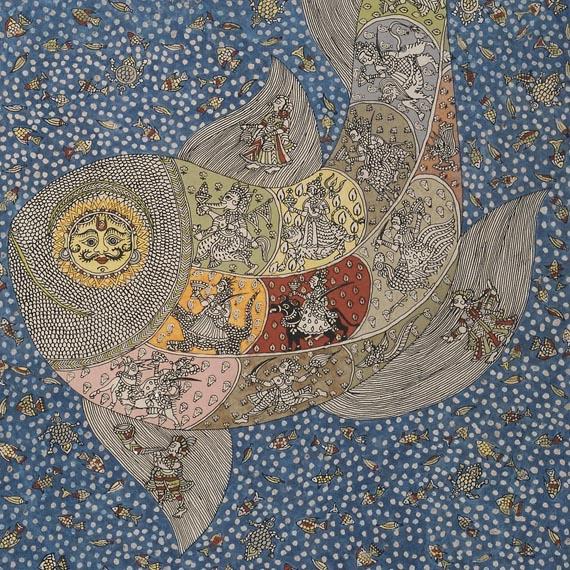
Born in 1978 Sanjay Manubhai Chitara is part of one of the last surviving families who paint the Mata ni Pachedi. He started painting at the age of 15 and learnt the technique from his father. His family, who are Devi Pujaks, (followers of the mother Goddess) trace their association with the art of painting ritual cloth back three centuries. Mata ni pachedi literally means “behind the Mother Goddess”, and is a cloth that constitutes a temple of the Goddess. When people of the nomadic Vaghari community of Gujarat were barred from entering temples, they made their own shrines with depictions of the Mother Goddess on cloth. The paintings usually have a set pattern, with the Mother Goddess dominating the central area, surrounded by deities and commoners worshipping her with equal reverence.
Sanjay Chitara has moved away from the traditional palette of maroon and black made from oxidized iron and palm sugar and experiments with turmeric, henna and indigo to create a more varied colour scheme still using the age old methods of extracting colour from natural materials.
Sanjay has participated in several exhibitions in India and around the world such as Spic Macay, Mumbai, Devi Art Foundation, Delhi and the Hat Project, UK. He won the Gujarat State Award in 1999 and a National Award in 2000.










